
The names of migratory and wintering birds.
The content of the article
- What is the difference between migratory birds and wintering: presentation for preschoolers
- Migratory, nomadic birds: list with names, photo
- Disading, wintering birds: list with names, photo
- Why do migratory birds fly into the warm edges where they winter, why are they returning back?
- What birds arrive first and last in the spring?
- Do the migratory birds in the south curl nests?
- What birds fly the first and last in the fall?
- What kind of migratory birds promise snow?
- What bird from the Kurotny detachment is migratory?
- Video: Migratory birds. Children about birds
Conditionally, birds can be divided into three groups - sedentary, nomadic and migratory.
All of them lead a similar way of life, but some of them with the advent of colds fly into the warm edges, while others calmly remain on the territory they chosen and wait for rain, snow and frost in a secluded place. In our article, we will try to understand the behavior of birds in more detail, and also tell which of them are migratory, and which ones to wintering.
What is the difference between migratory birds and wintering: presentation for preschoolers
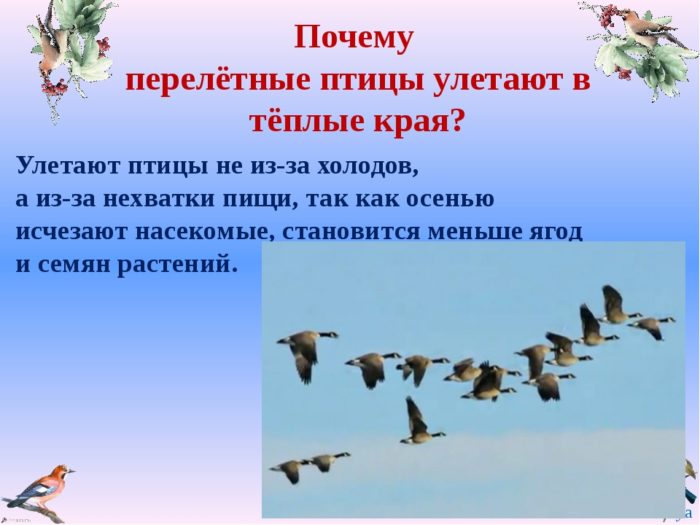
Slide No. 1
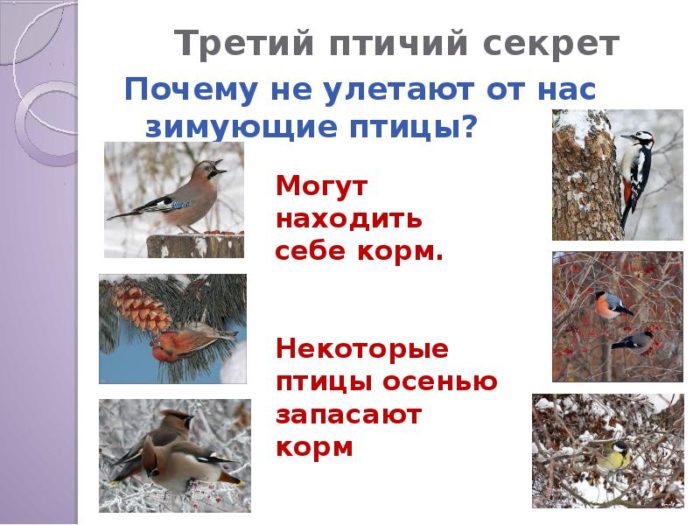
Slide No. 2
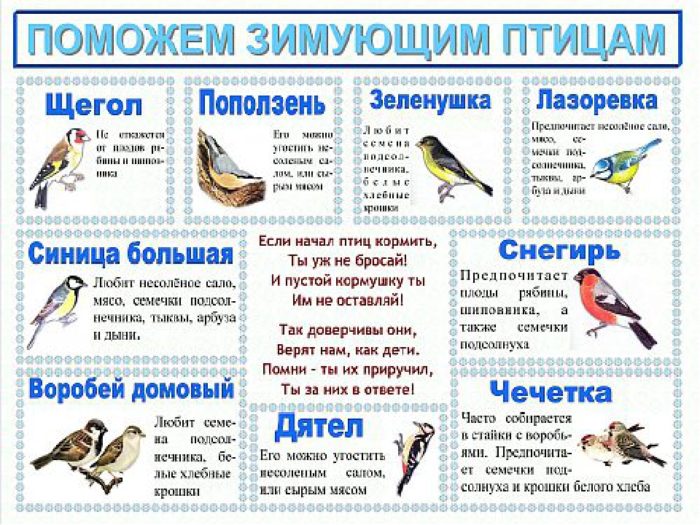
Slide No. 3
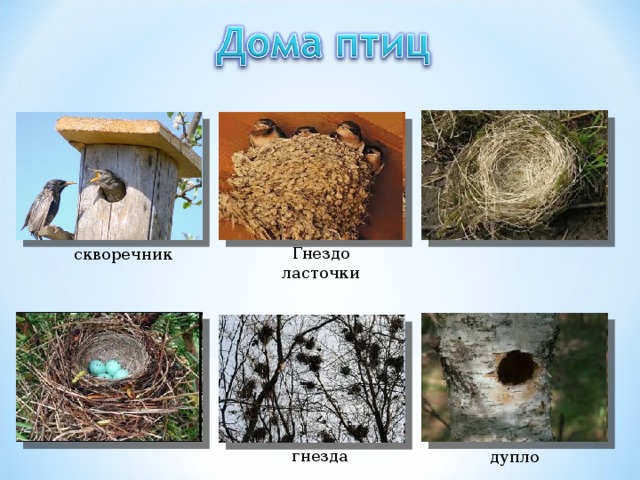
Slide No. 4
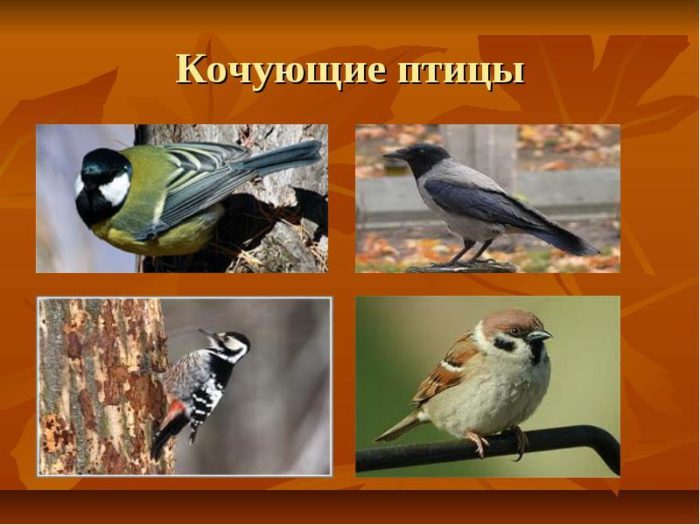
Slide No. 5
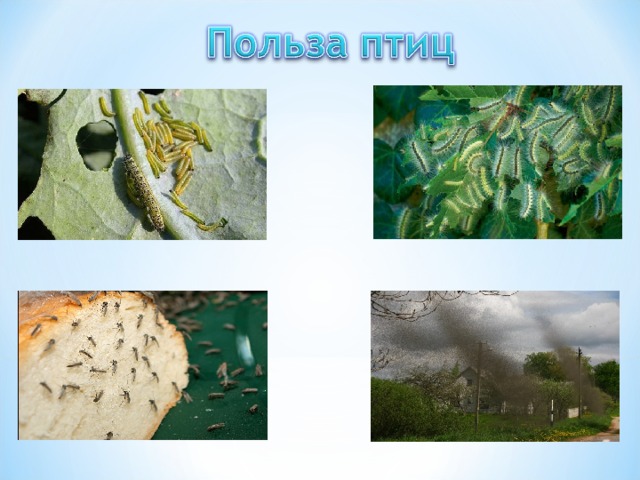
Slide No. 6
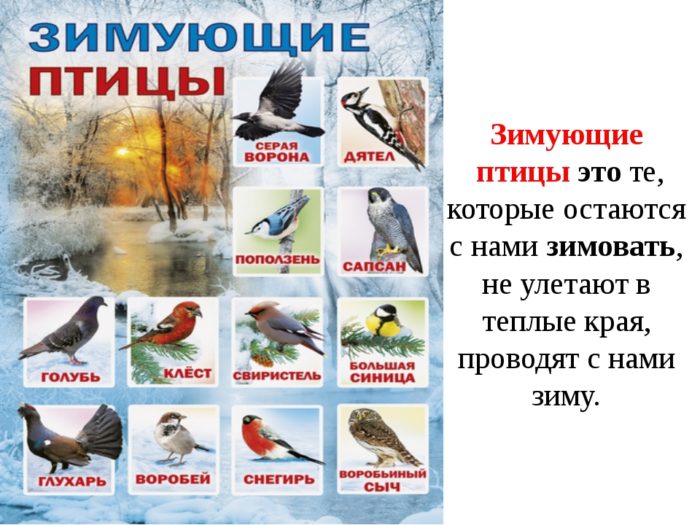
Slide # 7
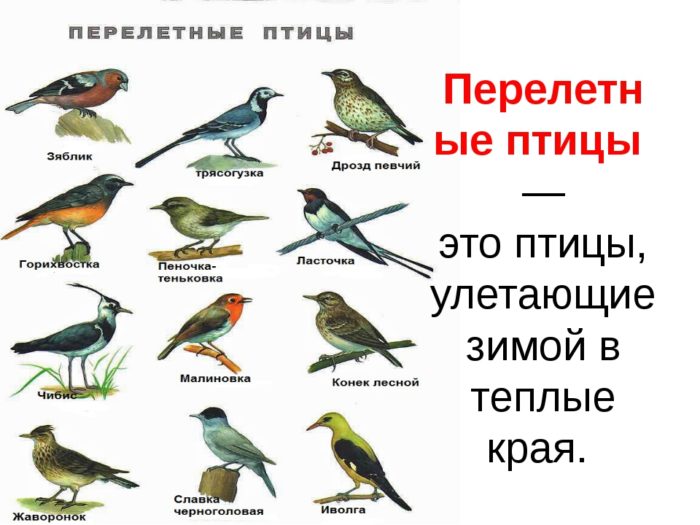
Slide No. 8
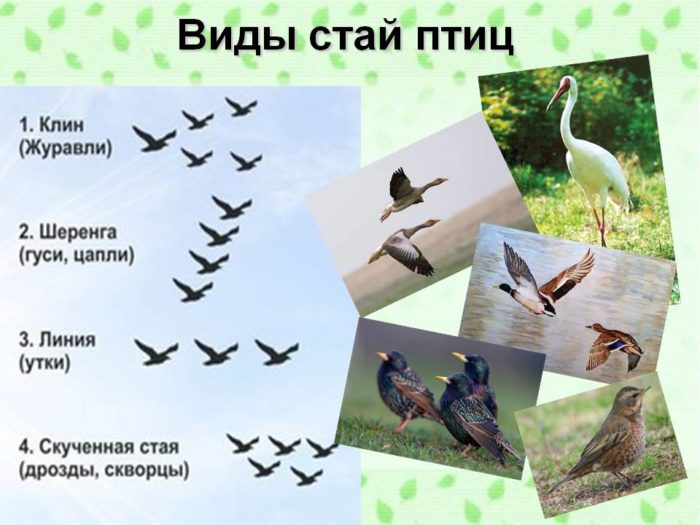
Slide No. 9
Above you can see a presentation from which you can find out how the migratory and wintering birds differ from each other. In addition, you will find out that one and other species eat, and in what nests they live. Our presentation will help you get a complete idea of \u200b\u200bthe life of birds living in our territory, and also see how they look in nature.
Migratory, nomadic birds: list with names, photo
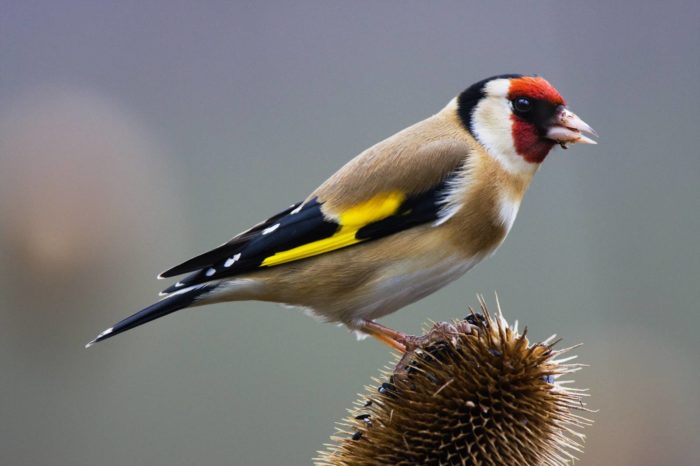
Goldfinch. This bird has a rather bright color that makes it noticeable even among the green foliage. Its feathers are painted in white, yellow, red and black. In terms of its size, plowing is even less than a sparrow, but his fingering and endurance allows him to easily overcome long distances, practically without making large breaks. Most often they settle in gardens or deciduous groves, where they deduce their offspring.
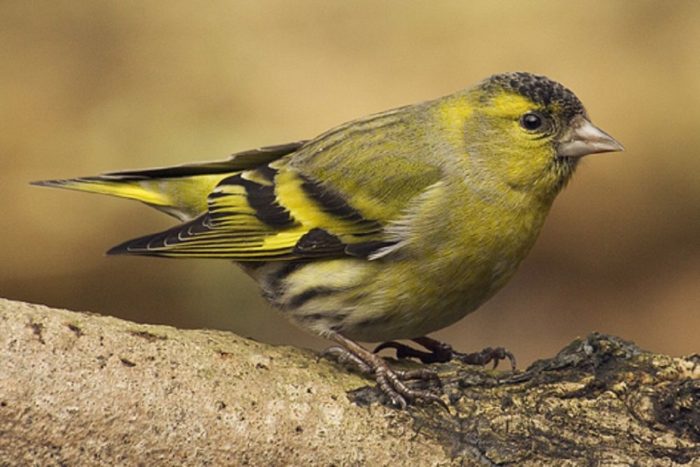
Chizh. This migratory bird is somewhat similar to a chip. It also has a bright color and small dimensions. The yellow-black color makes this bird very colorful and thanks to this it is not lost against the background of coniferous trees, on which it most often settles. These birds do not like to sit in one place, so they are all the time.
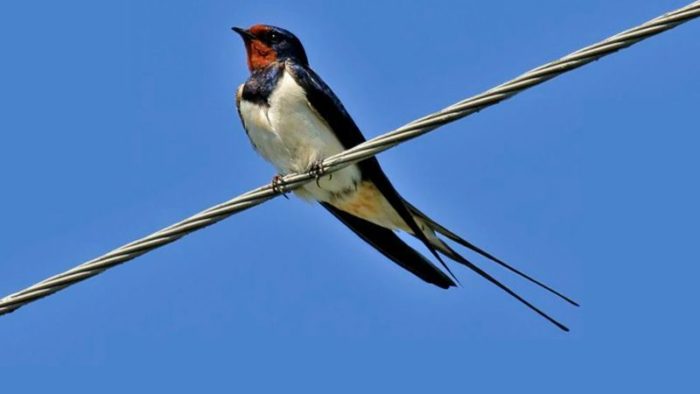
Martin. Another small bird, which for the winter moves into warm edges. All types of swallows have a black, almost coal color of the top of the body, a large mouth and easily recognizable sharp wings and tail. This bird is moved exclusively through the air, and practically does not walk on the ground. She descends to Earth only to collect material for her future nest.
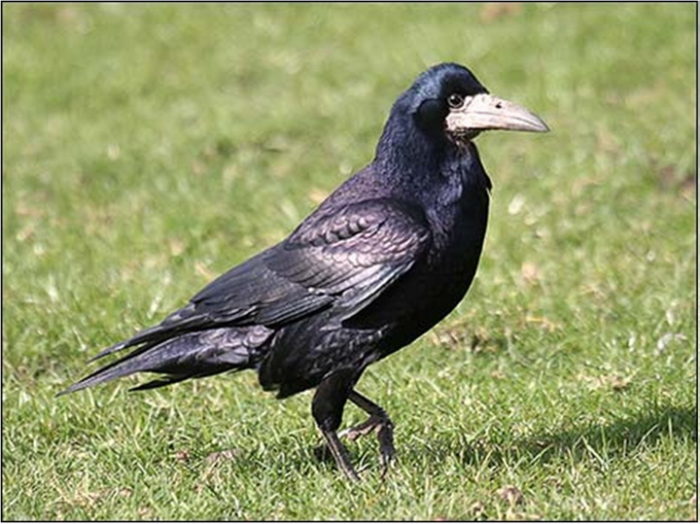
Rook. Quite often, people confuse rooks and crow. Yes, these birds have the same black plumage and a similar body shape. But still, rooks have characteristic differences, which help to distinguish them from the raven. They have smaller sizes and an ineverable focus of the skin on the head.
These birds do not like noise, so they try to settle away from cities, in coniferous and deciduous forests. They eat completely different food. Depending on the habitat and season, it can be insects or plant seeds.
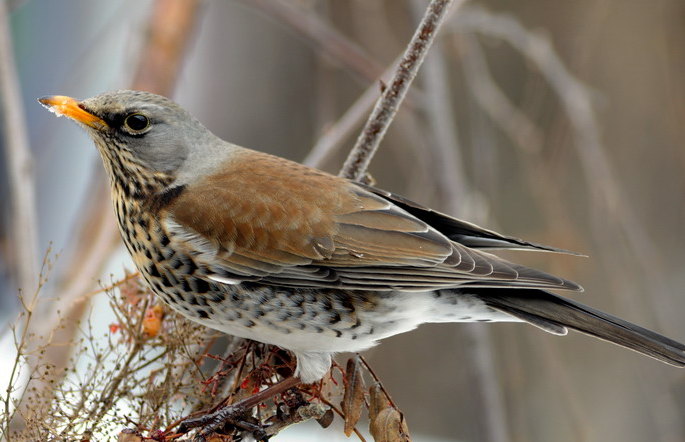
Thrush. This species of birds has a gray-red color on which there are dark spots. Most often they are located in the abdomen and wings. Drozds are not very picky birds, so they can live everywhere where there are food and shrubs in which they can nest. These birds feed mainly with worms, midges and butterflies.
Drozds belong to those species, birds that are very attentive to their offspring. As a rule, they do not leave their chicks for a long time, and if they are excommunicated, they try to fly to such a distance to hear their scream.
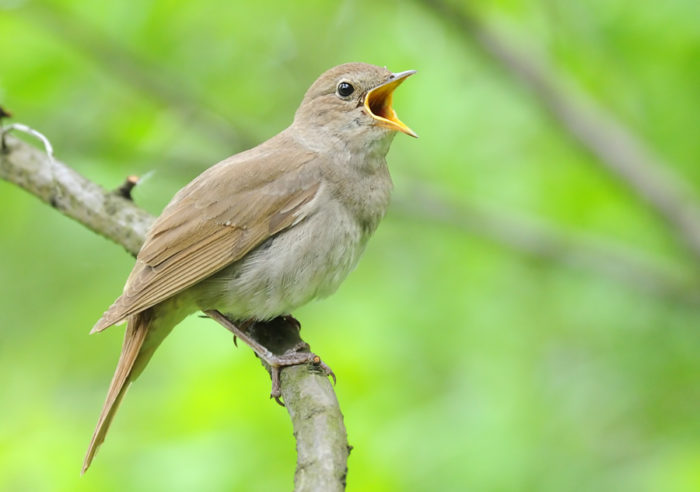
Nightingale. This small and inconspicuous bird is familiar to almost everyone, but as practice shows, most often it will be recognized not by appearance, but by beautiful and memorable singing. The ideal habitat of nightingales is considered deciduous forests. If for some reason they settle closer to people, then as a rule, they choose gardens in which there are thick shrubs.
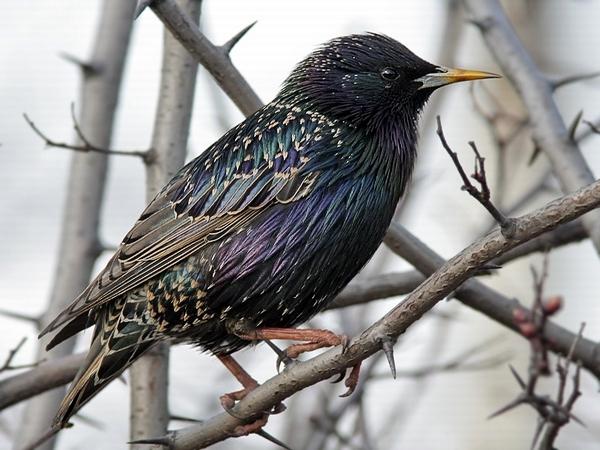
Starling. This species of migratory birds has a dark color that changes its tint depending on the time of year and on age. As a rule, in summer and autumn they have black plumage with a pinkish, blue or bronze tint. In the spring, when the starlings return from wintering, they begin an intense molting period, and the color and feathers become a little faded and acquires a slightly brown tint.
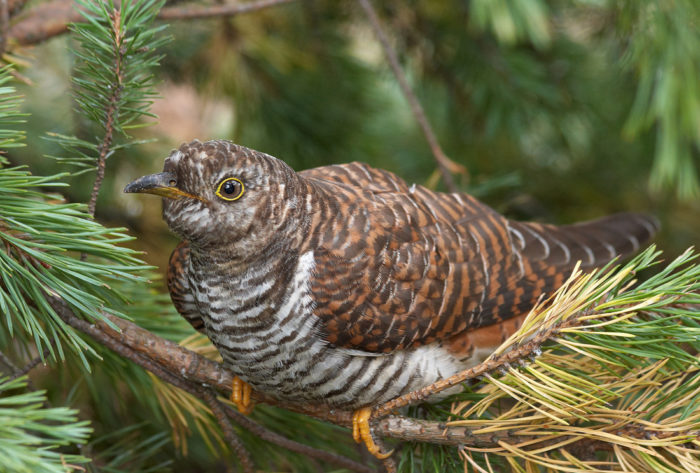
Cuckoo. It has a small size and gray-brown color. Sometimes brown is even a redhead of plumage is more inherent in females. But the males at any time of the year remain dark gray. The only similar feature of representatives of this species are noticeable yellow legs. Cuckuses most often live in forests, but at the same time they are not tied to one place. Moreover, they even put their offspring to other birds. Taking care of the continuation of a kind, she immediately flies away and never return to her chick.
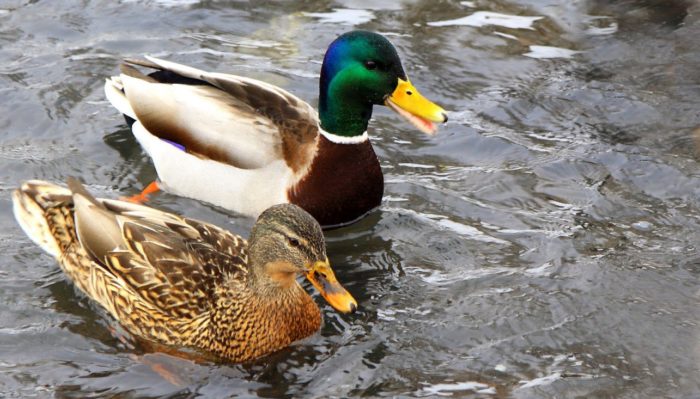
Duck. This species of birds prefers to live and nest away from people. As a rule, for this they choose the most secluded places near the water or on small islands located on forest swamps or lakes. Ducks feed mainly with vegetation, but sometimes small acorns are also eaten.
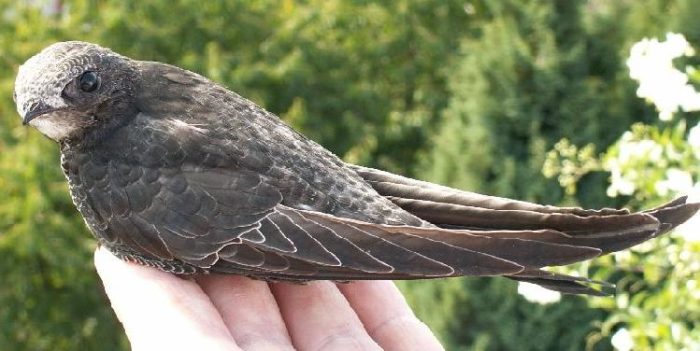
Swift. Recently, he has become considered a city bird who feels comfortably on the roofs of high -rise houses. It is here that he drives his nests, lays eggs and grows chicks. With the advent of autumn, the cuts without regret throw a rested place and go with their relatives to the warm edges for wintering.
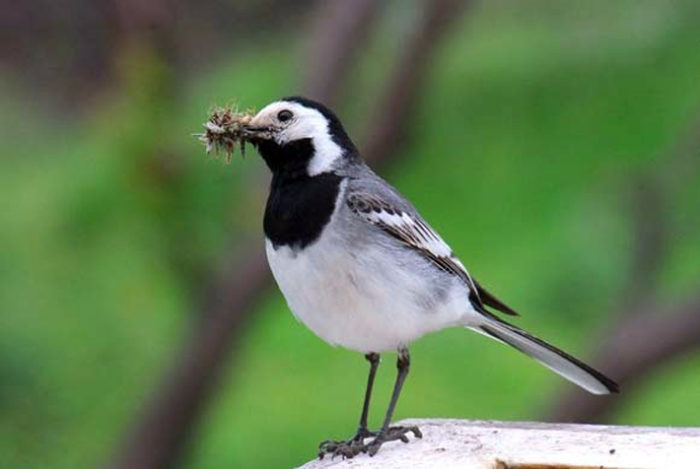
Wagtail. The heat -loving bird that does not tolerate cold. That is why, with the approximation of cold weather, it breaks down from the homes and goes to the warm edges. In the summer, the wagtail lives in low hollows or between the roots of large trees and feeds on various midges.
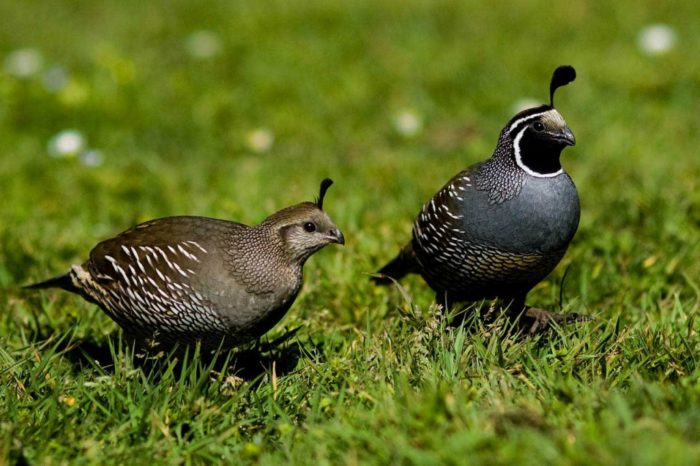
Quail. Despite its small size and fragility, wild quail is also a migratory bird. As a rule, from wintering, these birds return when the air warms up thoroughly and young stable greens appear. Usually they appear in raised places at the end of April in early May.
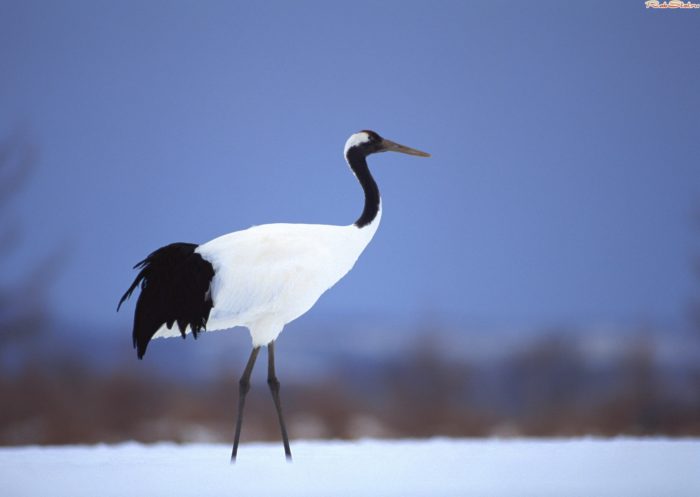
Crane. He prefers to live in a swampy area away about a noisy civilization. In search of food, it can fly into small villages and villages, but, as a rule, it descends to the ground only to swampy places or wet meadows.
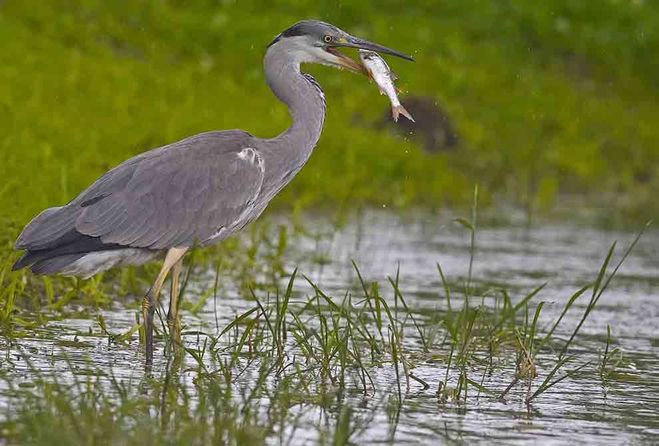
Heron. A migratory bird that can leave their own places in August. Most often, she flies away so early if she feels the approach of cold weather. If the fall is warm, then it can remain in the place until mid -October.
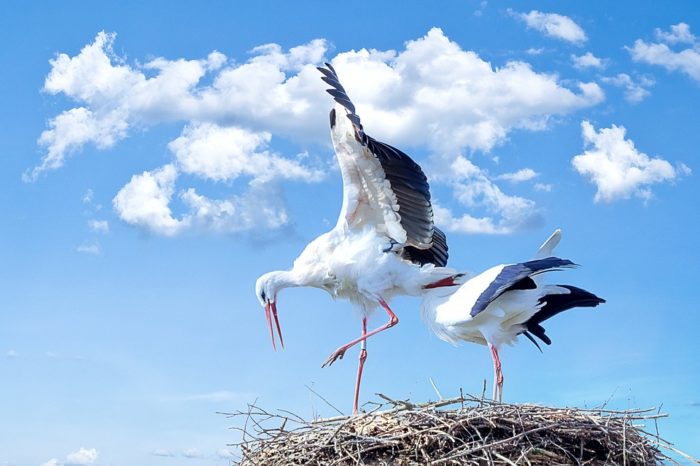
Stork. It is a swamp bird for which it is preferable to live as close as possible to water. But since storks are very hardy, they calmly settle on the roofs of houses and periodically go hunting.
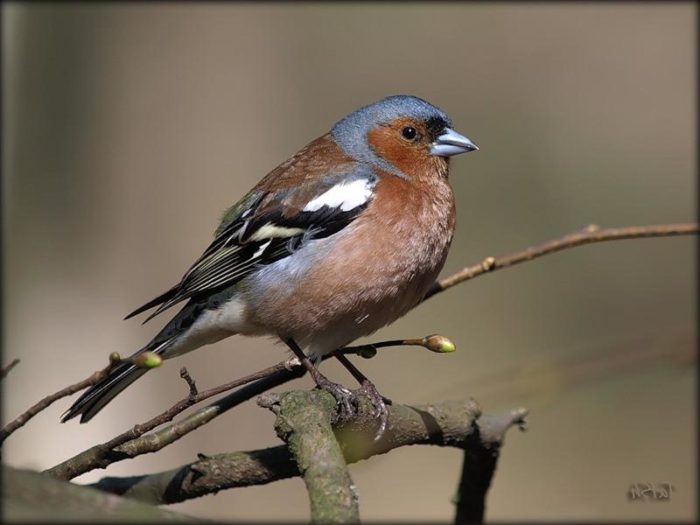
Finch. A brisk bird, which feels equally well both in the city line and in the forest wilderness. It feeds on midges, kidneys, seeds and young vegetation.
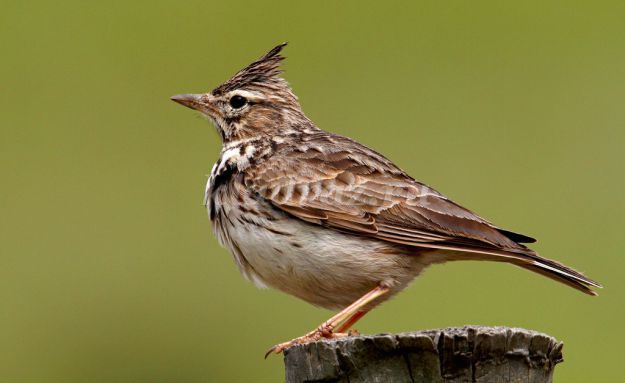
Lark. He prefers to live on earth and only occasionally rises into the sky. It flies over long distances only when it goes to wintering. It nests in tall grass near small shrubs.
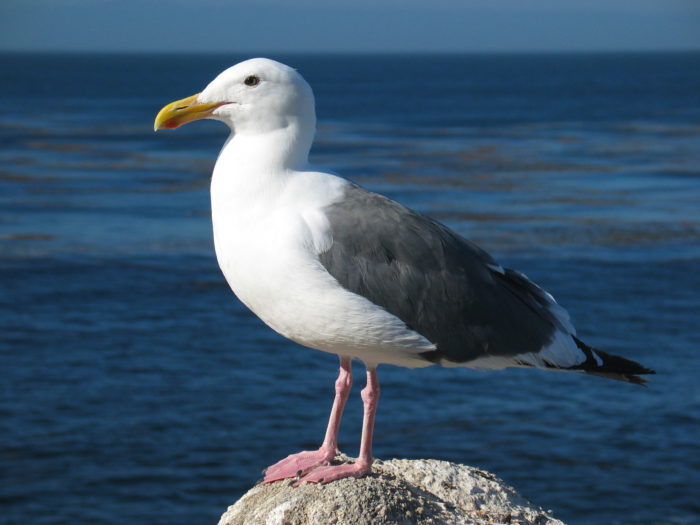
Gull. He feels great in the thickets of reeds. It prefers to nest here and raise his chicks. Both parents take care of the kids. After the chicks rise to the wing, they live on their own.
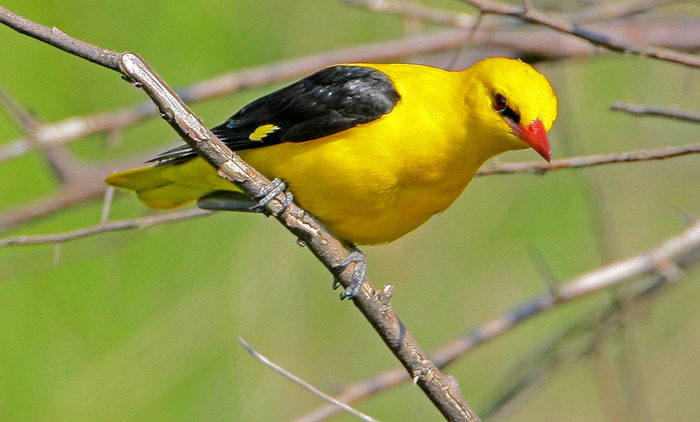
Oriole. Refers to those birds that go very early for wintering. Most often, already in mid -October, it flies into the warm edges and is located in a new place. The Ivolga returns back only in mid -May.
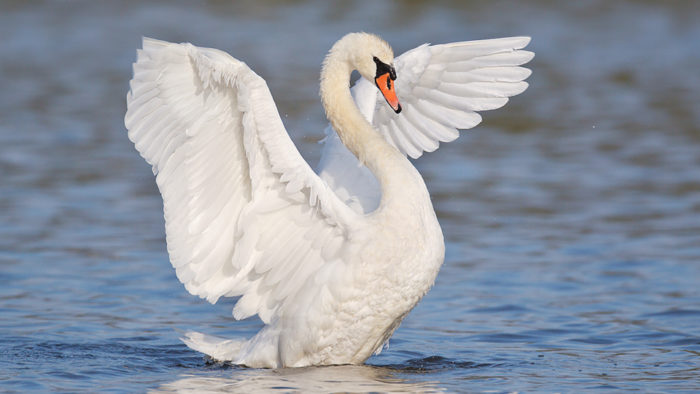
Swan. A very beautiful bird that prefers to live away from people. Swans sit in small lakes, where eggs are shaken and laid and grow chicks.
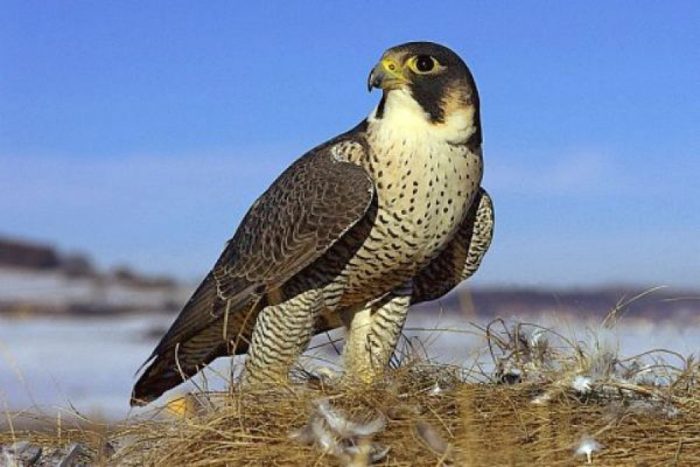
Falcon. He loves loneliness, so he tries not to let anyone in his territory. It is considered a predatory bird that hunts small rodents. He tries to nest very high, sometimes even settles on the roofs of houses.
Disading, wintering birds: list with names, photo
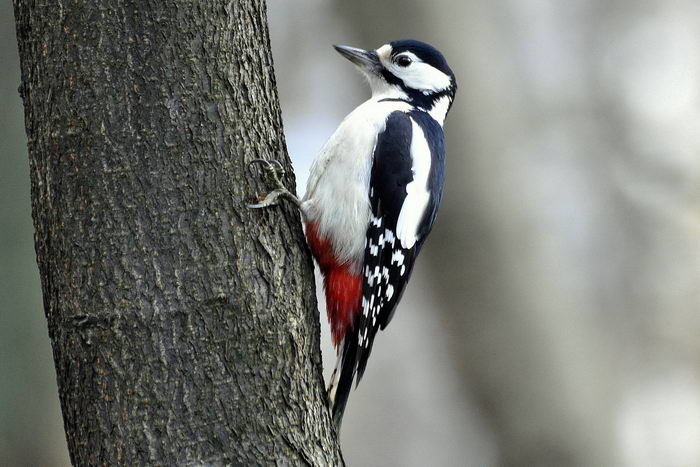
Woodpecker. Wintering bird, which easily tolerates cold and frosts. They settle in hollows of old trees away from noisy places. As a rule, they choose trees that serve both the house and give food in the winter.
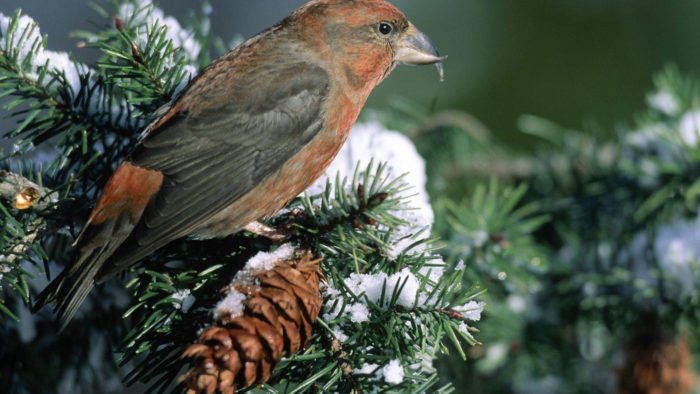
Crossbill. Sometimes this bird is also called Christ. She received such a name because of a peculiarly curved beak, which visually resembles an Orthodox cross. In fact, this bird has nothing to do with religion, and such an interesting shape of the beak helps it get seeds from spruce and pine cones.
Another distinctive feature of these birds is the ability to hang your head down. In this, thin tenacious legs help her, which reliably fix it on branches of any thickness.
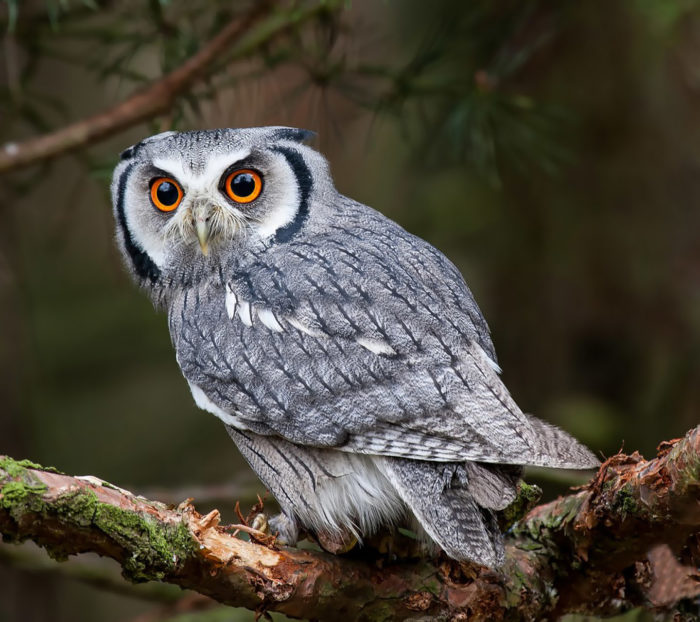
Owl. This bird is a predator who leads a night lifestyle. As a rule, in the afternoon it practically does not move and is in a calm state. The owl hunts in most cases at night and feeds on mice or mouse -like Georgians.
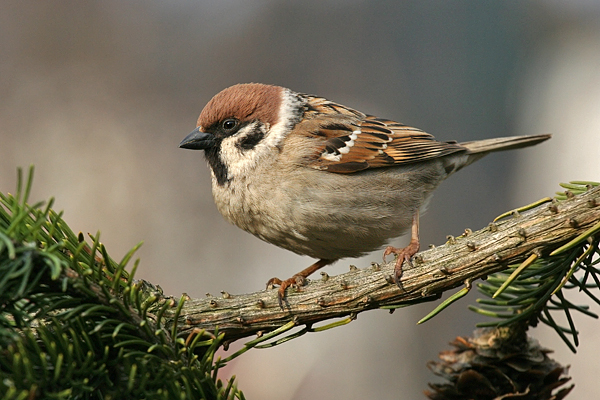
Sparrow. These little birds calmly get together with a person, so for their housing they can choose a roof of a house or summer gazebo. They eat anything. They can eat seeds, viburnum, mountain ash, grain and even waste of human food. They begin to multiply in early spring, and most often they do not build their own nests, but lay eggs in those left by other birds.
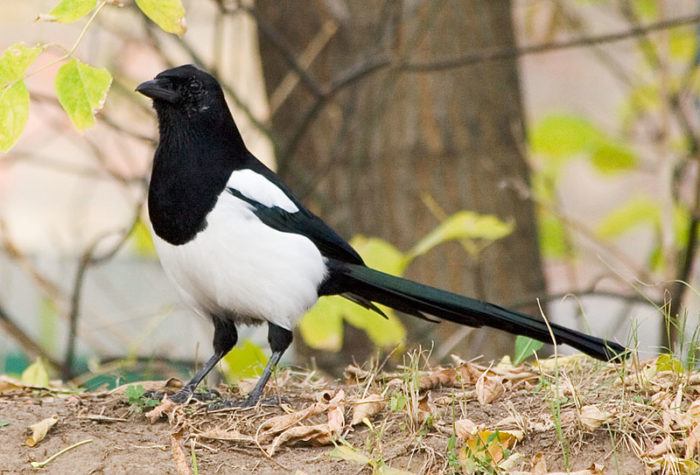
Magpie. It has a very peculiar color that prevents it from confusing it with other birds. Magpies living in our territory have a black back and a head and a white tummy, and a barrel. Magic can live everywhere where there are trees. Therefore, it can be found both in the forest and in the city park.
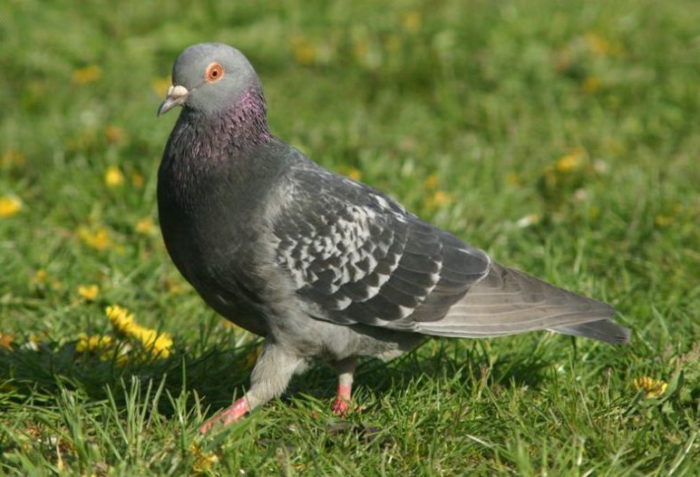
Pigeon. A very common species of birds that is not afraid of people. If they live in the same territory for a long time, then they do not bother with the search for food and eat everything that remains after people. In the wild, it feeds on seeds that it finds near various shrubs.
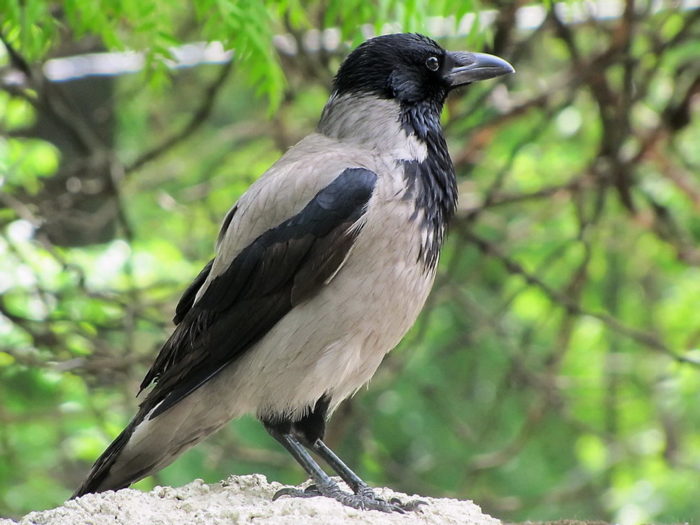
Crow. Another wintering bird that is not afraid of fierce frosts. Since she is not too overdue in food, with the advent of cold weather, she tries to move closer to people and eat that they did not have time to hide. These birds love loneliness, so they rarely gather in flocks.
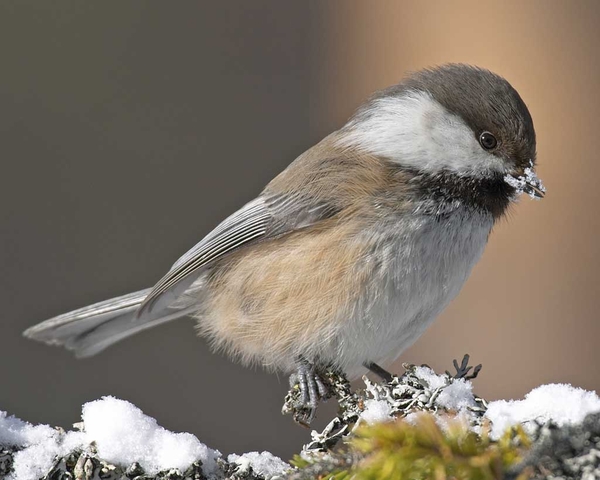
Gaika. Refers to the species of Sinita, preferring to lead a sedentary lifestyle. But unlike tits more familiar to us, it settles away from people, in dense forests where there are many berry shrubs. Various berries and seeds are the main source of its nutrition.
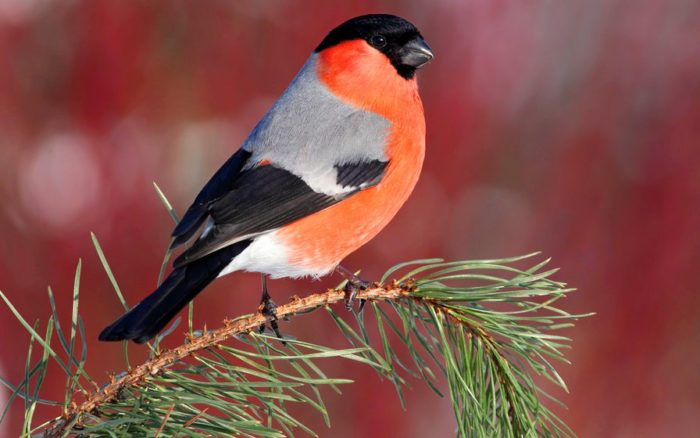
Bullfinch. A wintering bird, which in winter tries to stay closer to a person. Bullfins live in flocks, which allows them to fight off from larger and predatory birds. It feeds mainly by kidneys, shoots, seeds and young leaves.
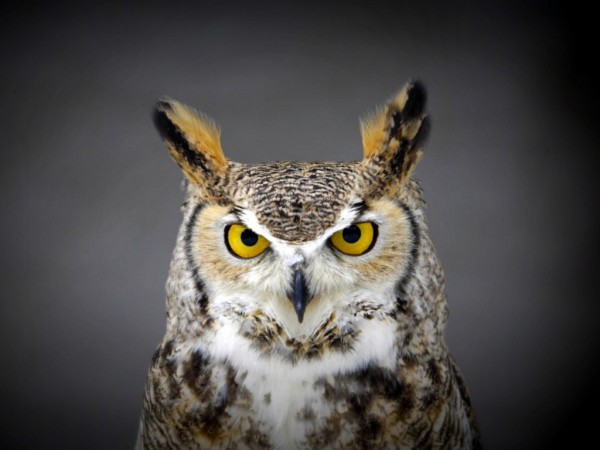
Owl. Since he is a close relative of the owl, it also remains to winter. True, unlike his other relatives, it does not tolerate cold, so it spends more time in a well -equipped hollow, from which it is chosen exclusively for night hunting.
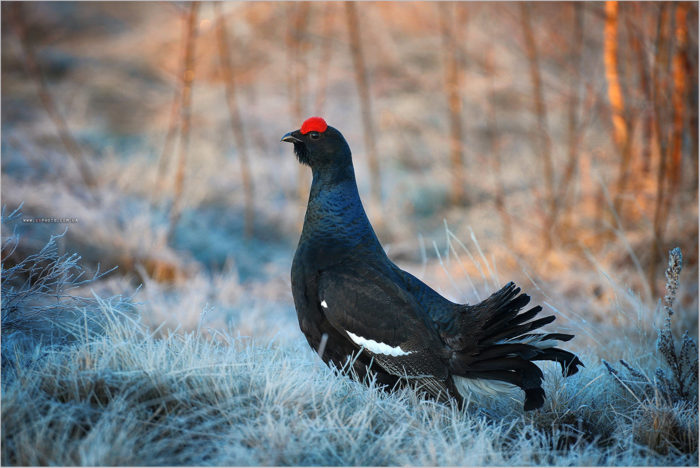
Teterev. This interesting bird lives in birch forests. She spends all day on the trees, eating an intensely buds. With the onset of darkness, it drops to the ground and buries in the snow, making a small tunnel for this, at the end of which a convenient camera will equip it.
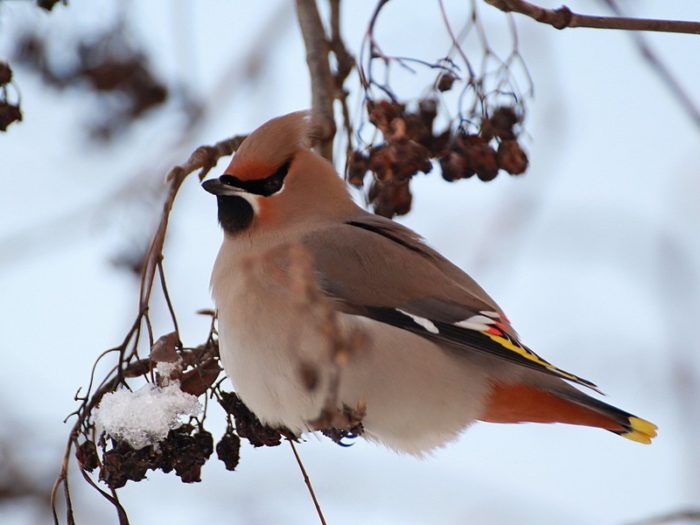
Waxer. An interesting bird that spends most of his life on searching for food. Almost all the time she flies from one tree to another, looking for what to profit from. Such its gluttony leads to the fact that part of the seeds she eats is not digested by the stomach and returns to the ground unchanged. For such a feature of the body, the waxwash is called a useful glutton.
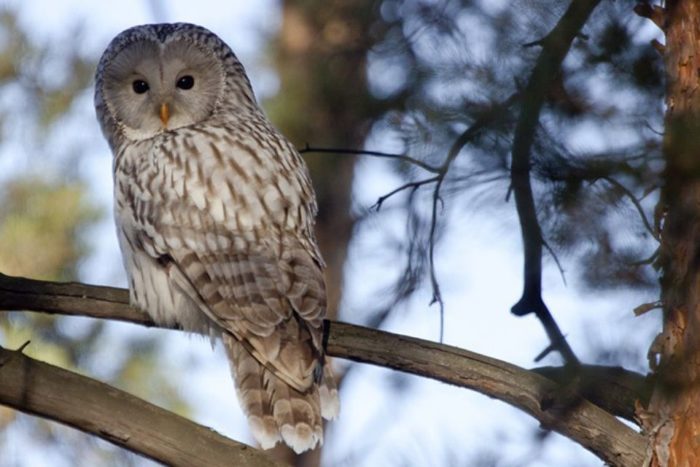
Inquires. This beautiful bird is a direct relative of the owl, therefore it also leads mainly a night lifestyle. Its only difference from the other relatives is a special affection for one place.
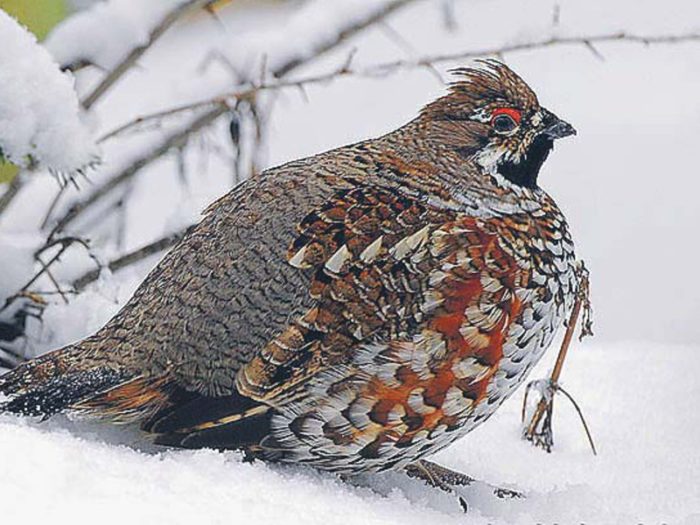
Grouse. It has a noticeable crest, which allows you to identify it as correctly as possible. Settles mainly in spruce forests. Since he cannot fly over long distances, he leads a sedentary lifestyle.
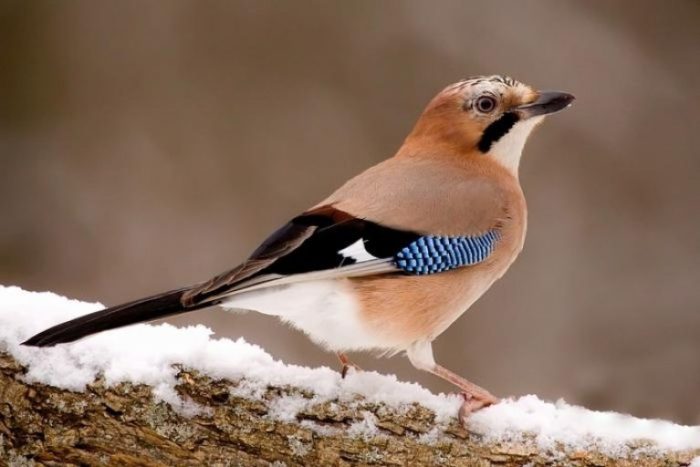
Jay. Prefers to lead a sedentary lifestyle. Sets in deciduous or mixed forests. In spring and summer, it feeds on small overweight, and with the advent of winter it switches to seeds and frozen berries.
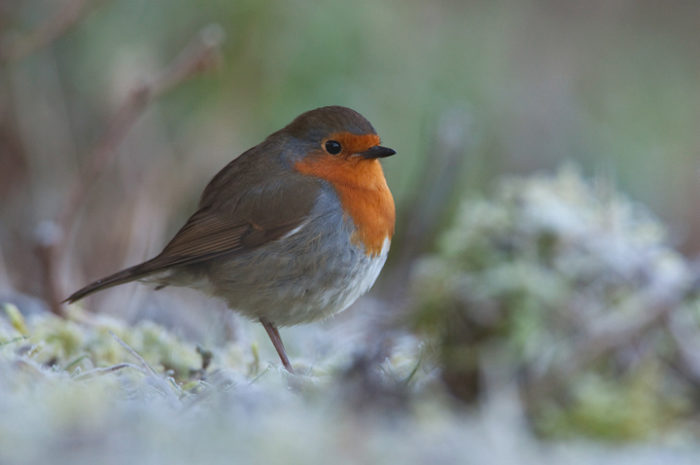
Zaryanka. The ideal habitat for this bird is deciduous forest with wet soil. In such a place, she easily finds earthen worms, snails and slugs. In winter, when all this living creature disappears, it switches to plant foods or feeds that people left.
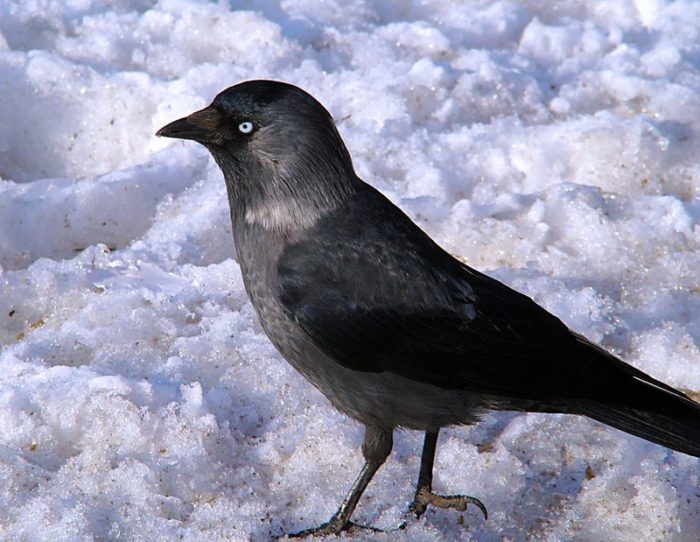
Galka. A rather large bird that lives calmly near people. It can eat both plant foods and food waste. Wintering, as a rule, along with crows.
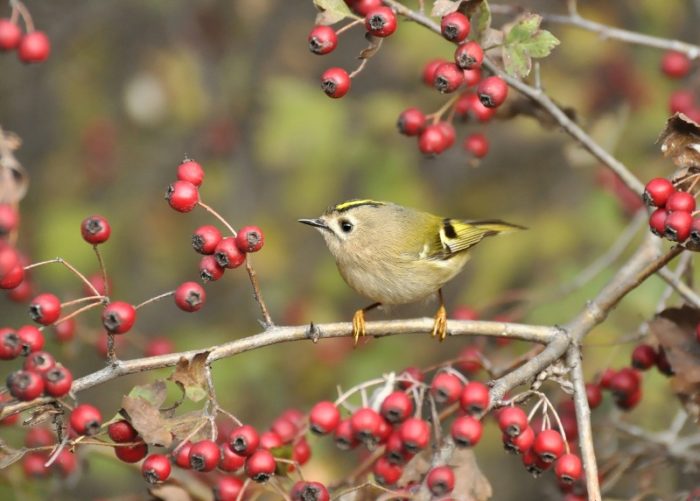
Korolek. A small bird who spends summer in a coniferous forest, eating kidneys, seeds and midges. With the advent of cold weather, the kings go into packs and move closer to people. During this period, they live in gardens and parks.
Why do migratory birds fly into the warm edges where they winter, why are they returning back?
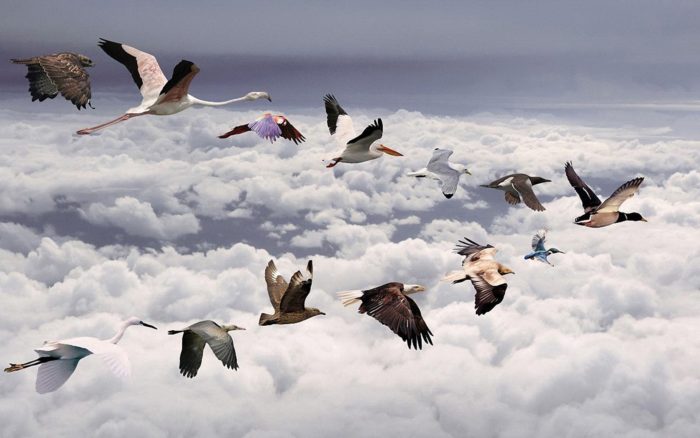
Migratory birds fly into the warm edges so as not to starve in winter
Most people mistakenly think that birds fly to warm edges due to the approach of cold weather. Yes, it also indirectly affects their behavior, but still most of them can quite calmly endure the cold.
Birds break off from the homes due to the fact that the amount of food is sharply reduced in autumn and winter. Therefore, in order not to starve to starve, they have to migrate and look for places where they can eat as before. Birds can winter in India, Africa, Greece, Spain, Italy or in the British Isles.
As for why they return back, ornithologists cannot give an exact answer to this question. Some believe that there they cannot find a normal place for nesting, while others say they do not let them remain small parasites that multiply in a hot climate very quickly.
What birds arrive first and last in the spring?
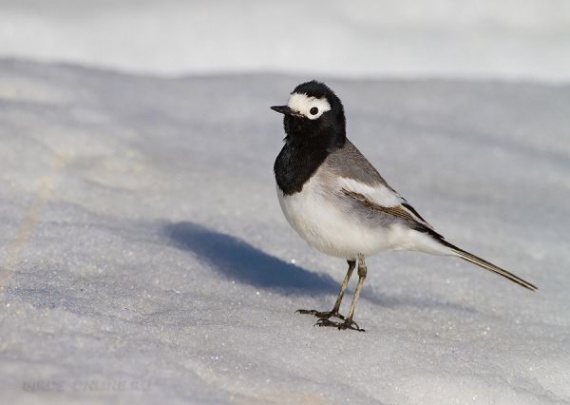
Lungeons are the first to arrive first in the spring
Oddly enough, it sounds, but the birds adhere to a certain arrival schedule home. The first of the wintering of the wintering of the wagtails are returned. Very often, these birds can be seen on not yet melted ice floes. In the middle of spring geese, cranes, gulls and ducks return. At the end of May early July, the most heat -loving birds, swallows and irregulars appear.
Do the migratory birds in the south curl nests?

Migratory birds do not get nests in the south
As you know, the birds drive nests solely in order to lay eggs and sit offspring. And since all the migratory birds bring off offspring in the territory in which they appeared themselves, they do not need to nest in warm parts. Most of them simply restore strength during wintering to easily move the return trip.
What birds fly the first and last in the fall?
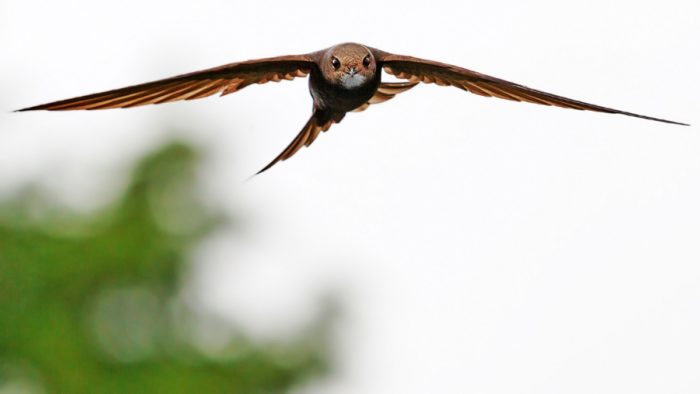
The first to fly in the fall of
The first to remove cuts from the homes. This is due to the fact that they spend most of the time high in the sky. And since with the approach of cold weather it becomes too chilly, they, so as not to sink below, simply begin to migrate.
The very last geese and ducks go to the warm edges. They remain in habitats until there is at least minimal vegetation. But as soon as the first frosts hit, they gather in flocks and go to winter.
What kind of migratory birds promise snow?
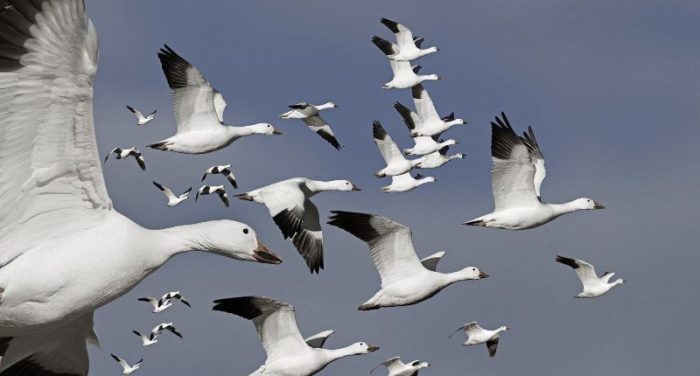
A flock of geese
Hussy were always considered harbingers of snow. This is due to the fact that they last go to the warm lands, as it were, anticipating that very soon the earth will be tamed with a white blanket. It is this, as soon as the flocks of geese appeared in the sky, people began to more intensively insulate and prepare for the onset of cold weather.
What bird from the Kurotny detachment is migratory?
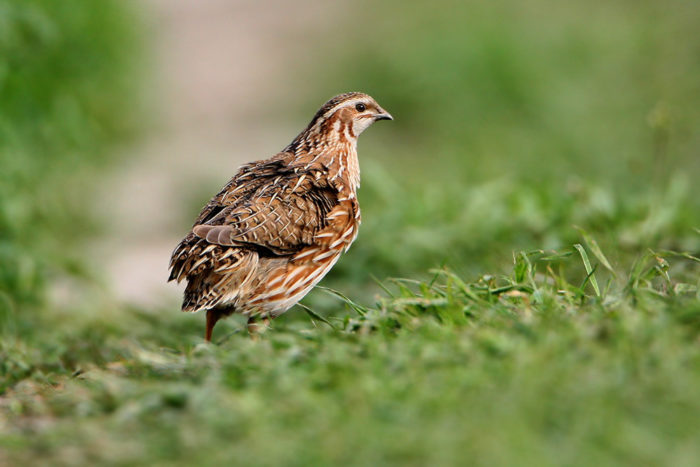
The quail flies into the warm edges
We are used to counting the kurozh -shaped birds that are incapable of long flights. But even among them there is a form that is decided on such a long journey. A small and fragile quail, so as not to winter in the cold, goes with all the migratory birds to the warm edges. As a rule, it winter in South-West Asia or in Africa.
